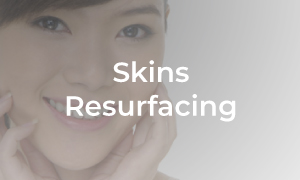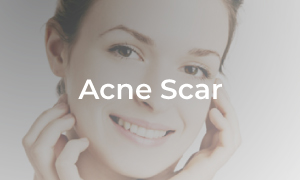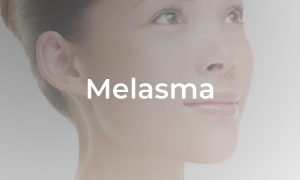Skins Resurfacing and Fractional CO2 Laser
Skin resurfacing is an aesthetic procedure in which laser energy is applied to remove the damaged skin, prompting it to heal and replaced with new and healthy skin. In laser skin resurfacing, the laser energy targets the skin’s surface and the deeper layers. Fresh new skin will grow in the treated areas, making the skin look smoother, fairer and more radiant. The laser also stimulates new collagen production in the deeper layers, which improves skin elasticity, leading to tightening, firming, and lifting of the skin.
Fractional CO2 laser is an effective and safe skin resurfacing technology. Instead of burning the whole skin as in the older generation of lasers, fractional CO2 laser only targets a tiny fraction of skin in the form of multiple tiny laser dots. The operator can accurately control the laser settings, and the system delivers the laser beams in a very precise manner. After the treatment, the skin will have multiple tiny scabs that will peel off and be replaced by new skin in a few days. This way, the patients can achieve laser resurfacing benefits, but with significantly reduced downtime and complications.
The fractional CO2 laser is excellent for reducing wrinkles, firming and tightening the skin, improving skin tone and complexion, reducing enlarged skin pores, and treating skin pigmentation and discolouration. Depending on the severity, fractional CO2 laser may require one or more treatment sessions. The results are progressive, and the effects start to be visible after 2 to 3 weeks after the treatment commences. The CO2 laser is also an effective treatment modality for acne scars and hypertrophic scars (see Acne Scar).
Procedure
Laser System: Fractional CO2 Laser
Duration: 5-15 minutes for each session
Anaesthesia: Numbing cream (waiting time 30-45min)
Downtime: 3-7 days
Total sessions required: 1-5 sessions
The interval between sessions: 1 month
Post Treatment Care
What to Expect:
-
-
-
Skin redness, burning sensation, and itchiness may occur in the first few days. Do not scratch the skin.
-
Oozing of yellow fluid may occur during the first few days. Gently wipe with a clean cotton.
-
Tiny scabs on the skin will peel off in a few days, followed by new skin formation.
-
Full recovery in 5 to 7 days.
-
-
Skincare protocol:
-
-
-
Clean the face 2-3 times a day with a mild facial cleanser.
-
Apply the antibiotic cream (only for the first week).
-
Apply the prescribed moisturiser. Adequate hydration of the skin is essential in promoting skin healing, keeping the skin healthy, and protecting it from damage.
-
Apply the prescribed sunscreen at least twice a day, once in the morning and once in the afternoon. In the events that the sunscreen wears off due to sweating, face-washing, or swimming, it is important to reapply the sunscreen to provide continuing protection.
-
Use physical sun protection such as an umbrella and hat while under the sunlight.
-
Continuing sun protection is crucial to maintain satisfactory results and to prevent a recurrence.
-
-








